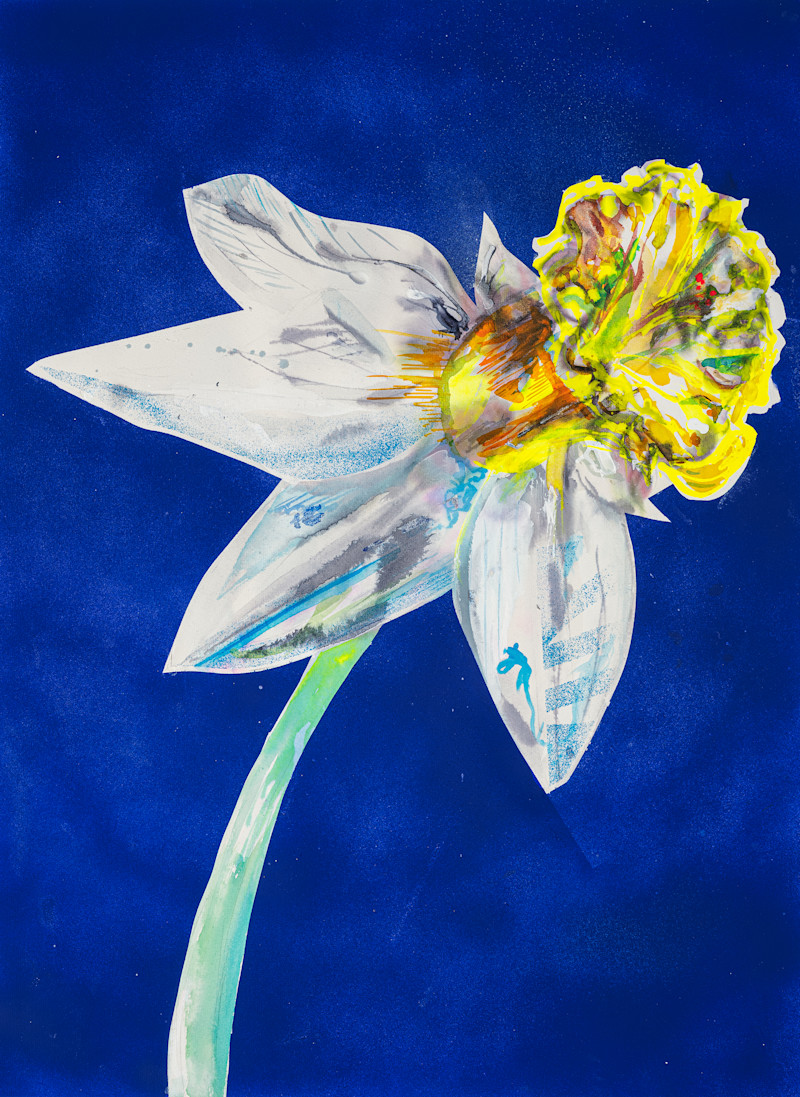About
Ulf Rollof
Narcissus
Continuous as the stars that shine
And twinkle on the milky way,
They stretched in never-ending line
Along the margin of a bay:
Ten thousand saw I at a glance,
Tossing their heads in sprightly dance.
[…]
For oft, when on my couch I lie
In vacant or in pensive mood,
They flash upon that inward eye
Which is the bliss of solitude;
And then my heart with pleasure fills,
And dances with the daffodils.
— William Wordsworth,
I Wandered Lonely as a Cloud, 1802
During a walk on Djurgården in Stockholm, Ulf Rollof found himself standing in a sea of narcissus flowers. Springing out of the cold ground like comets, he was struck by their beauty after a long winter.
Rollof’s work is always characterised by a strong autobiographical urge and sense of immediacy. The works presented in the exhibition Narcissus are no different. They stem from reflections on love and the relationships we have, both with others and ourselves. From our first love and its inevitable heartbreak to the families we create or marry into, Rollof ends up, much like Narcissus in the myth, looking at himself. Are we predestined to seek out partners that resemble our parents and to what extent are we shaped by what happens to us? Are we born narcissists or does our environment cultivate these characteristics in us?
Rollof’s inward eye goes on a visual journey through a field of explosive neon narcissi, on a whirlwind romance across the seven seas only to arrive close to home. Within his own family, Rollof finds a spiritual connection to his late father-in-law, the artist Erik Höglund. This bond is given form through the recreations of hand-blown glass torsi, initially designed by Höglund at Boda Glasbruk and presented here in an even larger format. Whether executed on delicate paper or cast in solid bronze, and all bearing gender neutral names, Rollof’s interpretations of the floral motif suggests that perhaps we all carry a narcissus within ourselves.




























